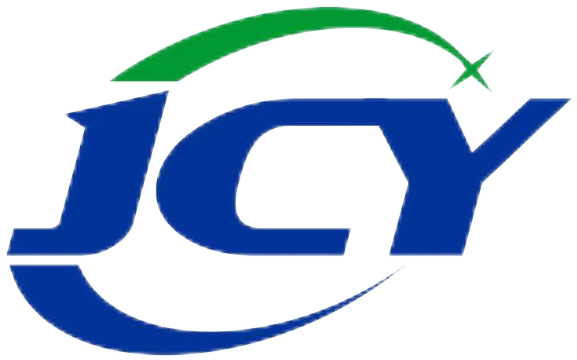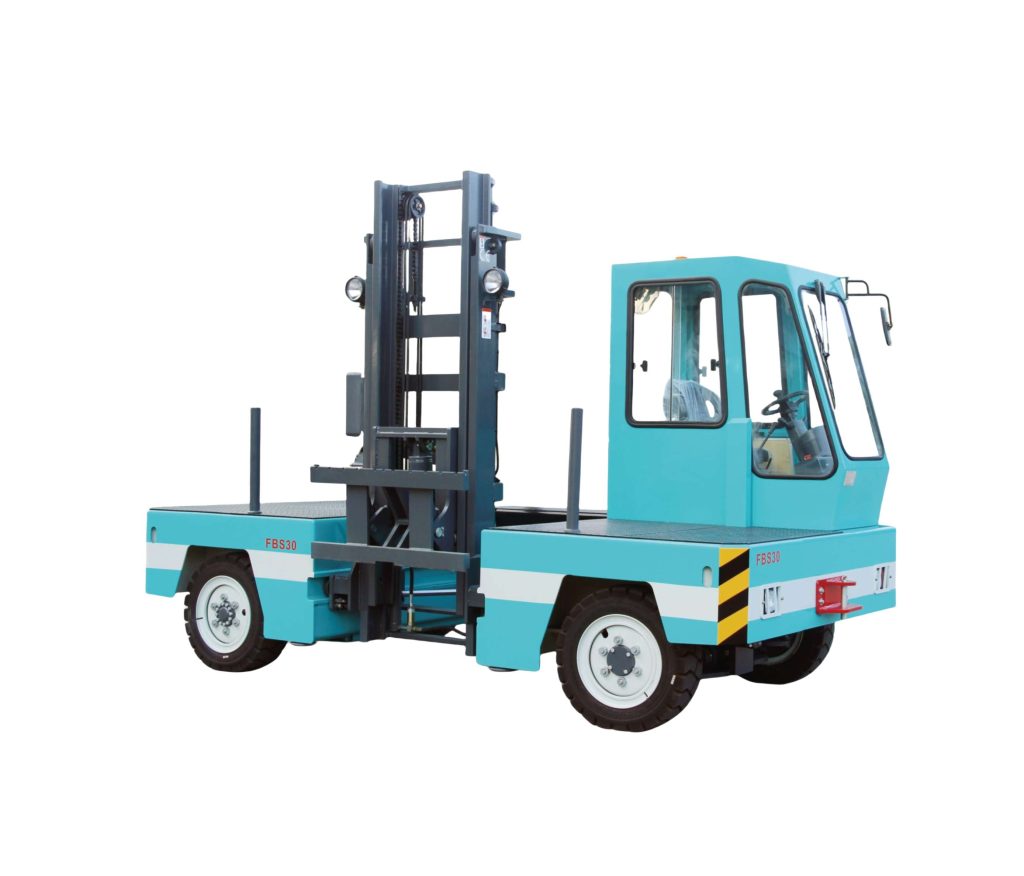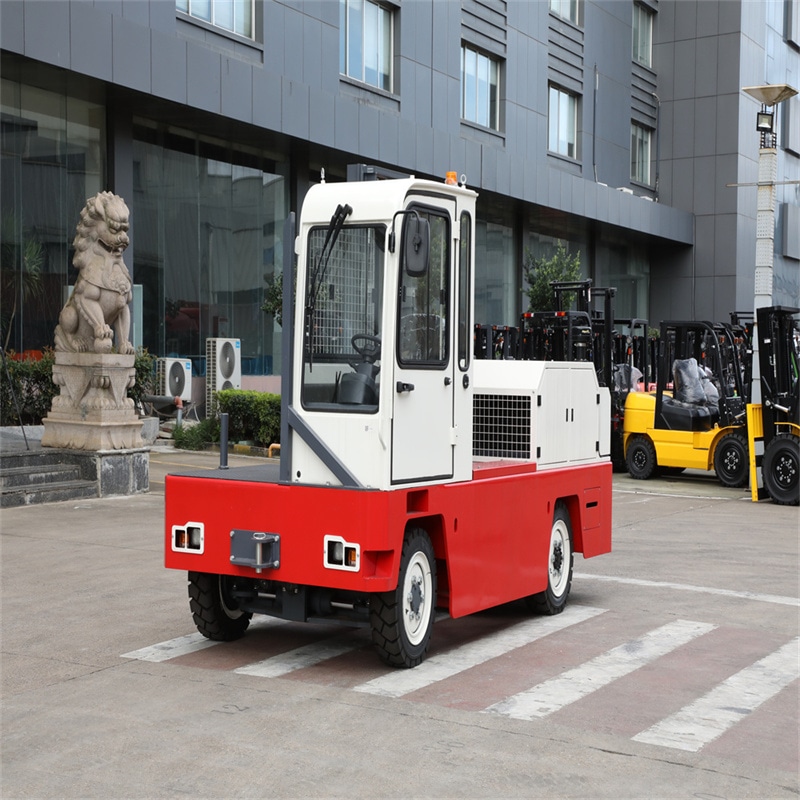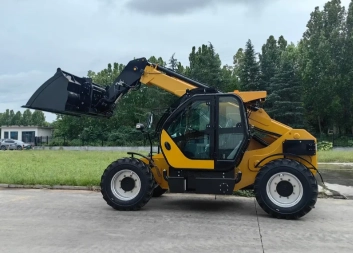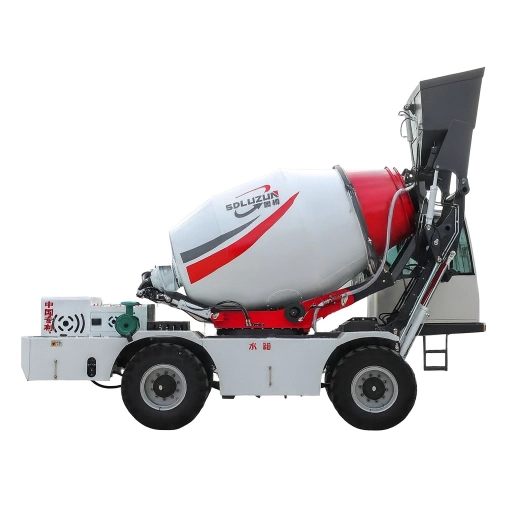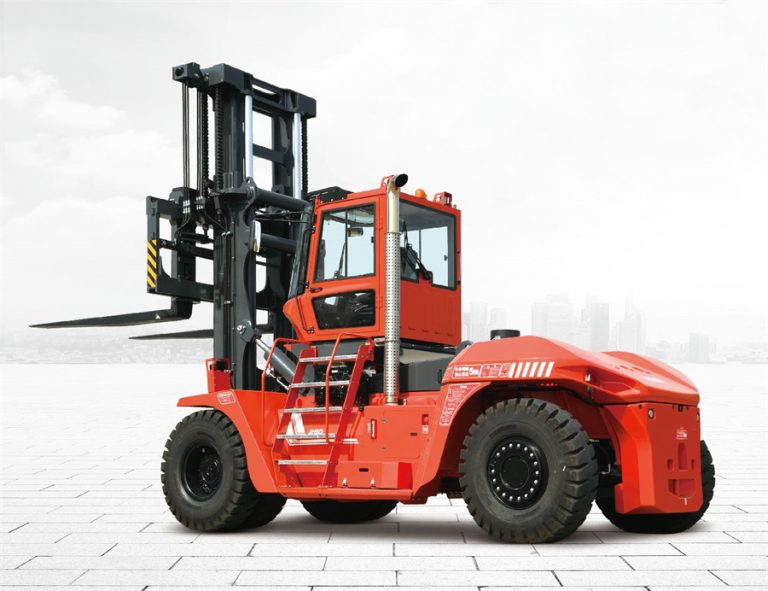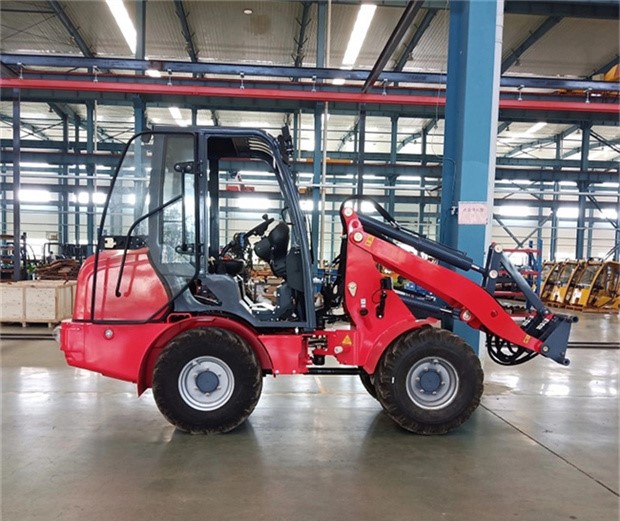Side loader forklifts are a big deal for businesses moving long, bulky stuff like steel pipes, lumber, or metal sheets. They’re not like regular forklifts. These machines grab loads from the side. This makes them awesome for tight warehouse aisles or hauling oversized items. But with tons of models out there, picking the right one can feel tricky. It’s not just about the price. You need a machine that fits your work, saves time, and holds up over the long haul. Here’s a rundown of the top 5 features to look for when buying a side loader forklift. We’re pulling from real-world use and industry know-how to help you make a solid choice.
Why Side Loader Forklifts Matter
Let’s paint a picture. Picture a warehouse crammed with 20-foot steel beams. Or maybe a lumber yard stuffed with timber. A standard forklift would need wide aisles to turn. That eats up space and slows things down. Side loader forklifts fix this. They carry loads along their side, so they slip through narrow aisles like a breeze. They’re a go-to for industries like steel, timber, or even liquor warehousing, where long or awkward loads are common.
But here’s the catch: not every side loader is built the same. A bad pick could mean breakdowns, safety issues, or pricey repairs. That’s why nailing the right features is key. Let’s dive into the five things you need to check when shopping for a side loader forklift.
1. Load Capacity and Stability
First up, check the load capacity. Side loader forklifts come in different sizes, from 3 tons to 10 tons or more. A 3-ton electric side loader works great for lighter stuff like pipes or timber in tight spaces. A 10-ton diesel model, though, is made for heavy jobs like shifting steel beams in big yards.
Why It Matters
Get the capacity wrong, and you’re in trouble. A forklift that can’t handle your loads will struggle. This could lead to tip-overs, damaged goods, or even hurt operators. Stability is just as big a deal. Since side loaders carry weight on one side, the center of gravity shifts. A solid model has a sturdy frame and counterbalance to keep things steady.
What to Look For
Capacity Match: Pick a forklift that fits your needs. A 3-ton electric side loader is perfect for indoor warehouses. A 6-ton or 10-ton diesel one handles outdoor, heavy tasks.
Strong Frame: Look for a tough chassis and a low center of gravity. This helps avoid tipping, especially with uneven loads.
Tested Stability: Ask for the manufacturer’s data on load distribution and stability tests. Make sure it’s rated for max capacity at full lift height.
For instance, in a steel pipe factory, a 6-ton diesel side loader hauls long pipes without needing wide aisles. It keeps things smooth and safe.
2. Power Source: Electric vs. Diesel
The power source is a big decision. Side loader forklifts come in two main types: electric and diesel. Each has its perks. Your choice depends on where you’ll use the machine and what you need it for.
Electric Side Loaders
Electric models, like a 3-ton electric side loader, are quiet and clean. They don’t spit out fumes. This makes them perfect for indoor spots like warehouses. They’re a hit in places like food or beverage plants, where air quality counts. The downside? You’ll need charging stations. Plus, they’re not great for long outdoor shifts.
Diesel Side Loaders
Diesel models, like 6-ton or 10-ton versions, are built for tougher jobs. They shine outdoors, on construction sites or in lumber yards. They handle long shifts and rough ground well. But they’re loud and produce emissions. So, they’re not ideal for indoor spaces.
What to Look For
Work Environment: Go electric for indoor, clean settings. Choose diesel for outdoor, heavy-duty work.
Battery or Fuel Life: For electric models, aim for at least 8 hours of battery life per charge. For diesel, pick a fuel-efficient engine to save cash.
Upkeep Needs: Electric models have fewer parts, so they need less maintenance. Diesel ones might need more frequent checkups.
I saw a liquor warehouse last month that switched to 3.5-ton electric side loaders. They loved how quiet it was. Workers weren’t choking on diesel fumes anymore. It made a real difference.
3. Maneuverability and Four-Way Steering
Side loader forklifts are great in tight spots. But not all are equally nimble. Maneuverability is huge when you’re weaving through narrow aisles or cramped yards. Some models have four-way steering. This lets the forklift move sideways, forward, backward, or pivot with ease.
Why It Matters
In a packed warehouse, space is tight. A nimble side loader means you don’t need wide aisles. You can store more stuff. Four-way steering also saves time. Operators don’t have to keep repositioning the forklift. That boosts productivity.
What to Look For
Four-Way Steering: This is a must for tight spaces. It lets the forklift slide sideways without turning the whole machine.
Tight Turning Radius: Check the specs for a small turning radius. This is key for indoor models.
Wheels: Look for multi-directional wheels or all-terrain tires on diesel models. They give better grip and control.
Think of a wood panel factory. Reach stackers and side loaders work together. A 10-ton diesel side loader with four-way steering zips through tight gaps. It saves time and cuts the risk of bumps.
4. Operator Comfort and Ergonomics
Your operators will be on the forklift for hours. Comfort isn’t just nice—it’s a must. A well-designed cabin with easy controls keeps operators happy, focused, and safe.
Why It Matters
Tired operators make mistakes. That can lead to accidents or damaged goods. A comfy, user-friendly cabin helps them stay sharp. Plus, in today’s job market, a nice work setup helps keep good workers around.
What to Look For
Easy Controls: Look for adjustable seats, simple joysticks, and clear dashboards. Nobody wants a control panel that feels like rocket science.
Cabin Features: Check for climate control, especially on diesel models used outside. Vibration dampening and noise reduction are big pluses too.
Good Visibility: Make sure the cabin gives a clear view of the load and surroundings. Fewer blind spots mean safer work.
A power industry customer told me their operators raved about the cushioned seats and simple controls on their 3-ton electric side loader. It’s a small thing, but it matters for long shifts.
5. Durability and Build Quality
A side loader forklift is a big investment. You want one that can take a beating and keep going. Durability is extra important for diesel models in rough outdoor settings or electric ones running multiple shifts indoors.
Why It Matters
A weak forklift will break down often. That means repair bills and downtime, which hurt your bottom line. Strong materials and solid construction ensure the machine handles heavy loads, tough terrain, or constant use without failing.
What to Look For
Tough Parts: Check for heavy-duty forks, masts, and frames made from high-quality steel.
Weather Protection: For diesel models, look for rust-proof coatings and sealed electronics. These stand up to rain or dust.
Warranty and Support: A good warranty (1-2 years minimum) and reliable service show the manufacturer trusts their product.
One customer in a big warehouse used a 3.5-ton electric side loader for two years straight. No breakdowns. That’s the kind of dependability you’re after.
About JinChengYu FORKLIFT as a Side Loader Forklift Supplier
JinChengYu FORKLIFT is based in Qingdao, Shandong Province. They’ve been in the game since 2002. They sell to places like South America, the Mid East, and Southeast Asia. Their lineup includes side loader forklifts, diesel forklifts, electric forklifts, and more. You’ll find everything from 3-ton electric side loaders to 10-ton diesel models. They’re all about “continuous improvement and pursuit of excellence.” That shows in their strong sales and service network. They offer support, rentals, and spare parts to customers worldwide. Whether you’re moving steel pipes or timber, their side loaders are built to get the job done.
Conclusion
Picking a side loader forklift is a big call. But focus on the right features, and it’s a win. Load capacity, power source, maneuverability, operator comfort, and durability are the pillars of a good machine. Get these right, and you’ll have a forklift that fits your needs, speeds up work, and keeps things safe. Whether you’re hauling pipes in a steel plant or stacking pallets in a liquor warehouse, the right side loader changes the game. Ready to shop? Look at your options and pick a machine that works as hard as you do.
FAQs
What’s the top feature to look for when buying a side loader forklift?
It depends on your setup. Load capacity and stability are often the biggest deals. A forklift that can’t handle your loads or tips easily is a problem. Match the capacity to your heaviest items. Check for a sturdy frame and low center of gravity for safety.
Are electric side loader forklifts better than diesel ones?
It’s about where you work. A 3-ton electric side loader is great for indoor warehouses. It’s quiet and clean. Diesel models, like 6-ton or 10-ton ones, are better for outdoor, heavy jobs. They’ve got more power but aren’t suited for enclosed spaces.
How does four-way steering help a side loader forklift?
Four-way steering lets the forklift move in any direction—sideways, forward, backward, or pivoting. It’s a lifesaver in tight aisles or cramped yards. You save time and space since the machine doesn’t need to turn as much.
Can I customize a side loader forklift for my business?
Absolutely. Suppliers like JinChengYu FORKLIFT let you add logos or tweak features for your industry. Need special forks for pipes? Or a comfier cabin? They can make it happen.
How do I make sure a side loader forklift lasts?
Look for tough parts like steel forks and frames. For diesel models, check for rust-proof coatings and sealed electronics. A solid warranty (1-2 years) and good after-sales support are key. Regular maintenance keeps it running strong.
